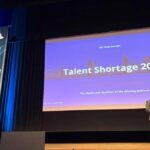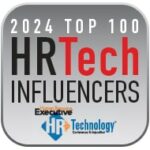Outplacement programs have long been an essential component of the business landscape, providing support and guidance to employees transitioning out of their current roles. However, in today’s era of constant disruption and evolving job markets, simply offering generic programs is no longer enough. As companies seek innovative ways to optimize outplacement processes, one avenue remains largely untapped – the power of predictive analytics. Drawing upon vast amounts of data and sophisticated algorithms, predictive analytics has the potential to revolutionize the outplacement experience, offering personalized insights and tailored solutions to job seekers like never before. In this article, we delve into the realm of predictive analytics and explore how its utilization can bring unprecedented precision and efficacy to outplacement programs. Join us on this thrilling journey where data-driven innovation meets the human quest for career transformation.
1. ”Forecasting the Future: Revolutionizing Outplacement Programs with Predictive Analytics”
Outplacement programs have been a crucial part of the employee transition process for years. However, with the advancement of technology and the emergence of predictive analytics, these programs are about to undergo a major transformation. The future of outplacement lies in harnessing the power of predictive analytics to provide personalized and effective support to employees.
So, what exactly is predictive analytics, and how does it revolutionize outplacement programs? Predictive analytics is the use of historical data, statistical algorithms, and machine learning techniques to identify patterns and predict future outcomes. In the context of outplacement, predictive analytics can help organizations anticipate which employees are at a higher risk of displacement and design tailored programs to best assist them in their career transition. By leveraging data-driven insights, organizations can offer individualized guidance, skill development resources, and job-matching opportunities to ensure smoother, more successful career transitions, ultimately reducing the emotional strain and financial burden on displaced employees.
- Benefits of utilizing predictive analytics in outplacement programs:
- Improved efficiency in identifying at-risk employees
- Customized support and resources for each individual
- Enhanced job-matching capabilities
- Reduced costs for both employees and organizations
With predictive analytics, outplacement programs have the potential to become more proactive, efficient, and impactful. By embracing this technological paradigm shift, organizations can provide displaced employees with the necessary tools and support to navigate the challenges of a career transition successfully.
“The future of outplacement lies in harnessing the power of predictive analytics to provide personalized and effective support to employees.”
2. “Unleashing the Power of Data: How Predictive Analytics Transforms Outplacement Services”
When it comes to providing outplacement services, there is no denying the transformative power of predictive analytics. By harnessing the immense potential of data, outplacement providers can now offer a level of personalized support and guidance like never before. Here’s how predictive analytics is revolutionizing the outplacement industry:
- Building personalized career roadmaps: Predictive analytics enables outplacement services to create tailored career roadmaps for individuals, considering their skills, experience, and industry trends. By analyzing vast amounts of data, career consultants can guide displaced employees towards the most relevant and in-demand career paths.
- Identifying job market trends: Through the power of data analysis, outplacement providers can identify emerging job market trends, allowing them to offer proactive advice and support. They can help individuals prepare for future job opportunities by understanding which industries are growing and what skills will be most valuable.
- Enhancing job search strategies: By analyzing past job placements and success rates, predictive analytics can provide valuable insights into effective job search strategies. Outplacement services can guide individuals on how to optimize their resumes, improve their online presence, and network more effectively.
Predictive analytics has unlocked a new era of outplacement services, where each individual’s unique circumstances and goals can be addressed with precision. The power of data empowers outplacement providers to deliver personalized assistance that maximizes the chances of successful career transitions. With the help of predictive analytics, individuals facing career transitions can navigate their new paths with confidence and find new opportunities that match their aspirations.
3. “From Reactive to Proactive: Enhancing Outplacement Programs through Predictive Analytics”
Traditional outplacement programs have often been reactive, offering support and resources to employees after they have already been laid off. However, with the advancements in predictive analytics, companies now have the opportunity to shift from a reactive to a proactive approach. By harnessing the power of data and utilizing predictive analytics, employers can not only enhance their outplacement programs but also provide valuable guidance and assistance to employees before they even reach the point of job loss.
Here are some ways in which predictive analytics can revolutionize outplacement programs:
- Early Intervention: Predictive analytics can help identify employees who may be at a higher risk of involuntary separation. By analyzing various factors such as performance metrics, engagement levels, and industry trends, employers can proactively approach these employees and offer support, training, or guidance to help improve their chances of retaining their jobs.
- Customized Support: Every employee’s situation is unique, and with predictive analytics, outplacement programs can be tailored to meet their specific needs. By analyzing individual skills, experience, preferences, and market demands, employers can provide personalized career counseling, training opportunities, and job placement assistance, resulting in higher success rates and faster re-employment.
- Identifying Transferable Skills: Through predictive analytics, employers can identify employees’ transferable skills that may be valuable in other roles or industries. This allows them to explore alternative career paths and provide relevant training, ultimately expanding employees’ opportunities for successful transition and minimizing time spent in unemployment.
4. “Unlocking Success: Leveraging Predictive Analytics to Optimize Outplacement Strategies
In today’s ever-evolving job market, outplacement strategies play a crucial role in successfully navigating career transitions. To truly optimize these strategies, organizations are now leveraging the power of predictive analytics. Predictive analytics, through its vast data analysis capabilities, offers deep insights into candidate behavior, market trends, and skill requirements, allowing companies to take a proactive approach when it comes to outplacement.
So, how does leveraging predictive analytics unlock success in outplacement? Let’s delve into its key benefits:
- Identifying future market demands: Predictive analytics helps organizations stay ahead of the curve by analyzing past labor market trends to identify emerging skill requirements. By understanding future job demands, companies can proactively train and prepare their employees for the evolving job landscape, enhancing their chances of successful career transitions.
- Enhancing personalized career coaching: With predictive analytics, outplacement services can provide customized career coaching programs based on individuals’ skills, strengths, and goals. By tailoring the coaching experience, employees receive personalized guidance and support, which in turn boosts their confidence and increases their chances of finding new employment quickly.
As the world of work continues to evolve at an unprecedented pace, organizations are finding themselves faced with the challenge of managing workforce transitions effectively. Enter predictive analytics, a revolutionary tool that has the potential to redefine the way we optimize outplacement programs.
In this article, we have explored the incredible possibilities predictive analytics brings to the table when it comes to navigating the turbulent waters of employee transitions. By harnessing the power of data and sophisticated algorithms, organizations can now make informed decisions, minimize disruptions, and ensure a smooth outplacement process for both employees and the business as a whole.
From identifying at-risk employees and pinpointing the most effective interventions, to predicting market demands and reskilling opportunities, predictive analytics acts as a guiding light in the darkness of workforce transformation. It provides HR professionals with invaluable insights, allowing them to adapt strategies, streamline resources, and empower individuals on their journey towards new career paths.
The benefits of predictive analytics in outplacement programs are truly boundless. It not only optimizes the allocation of resources and minimizes costs for organizations, but also has a profound impact on employees, empowering them to embrace change, tap into their potential, and navigate the uncertain employment landscape with confidence.
As we move into the future, where the only constant is change, organizations that seize the power of predictive analytics will undoubtedly gain a competitive edge. By leveraging data-driven insights to reimagine the way outplacement programs are designed and executed, businesses can foster resilience, cultivate a positive employer brand, and ultimately build a workforce that is equipped for success in the ever-evolving world of work.
So, as the curtains fall on this exploration of predictive analytics in optimizing outplacement programs, let us embrace the possibilities it presents. Let us unlock the potential of data, reshape the way we approach transitions, and pave the way for a future where resilience and adaptability reign supreme. Together, let us utilize these innovative tools to empower individuals, transform organizations, and shape a more prosperous and harmonious world of work.








